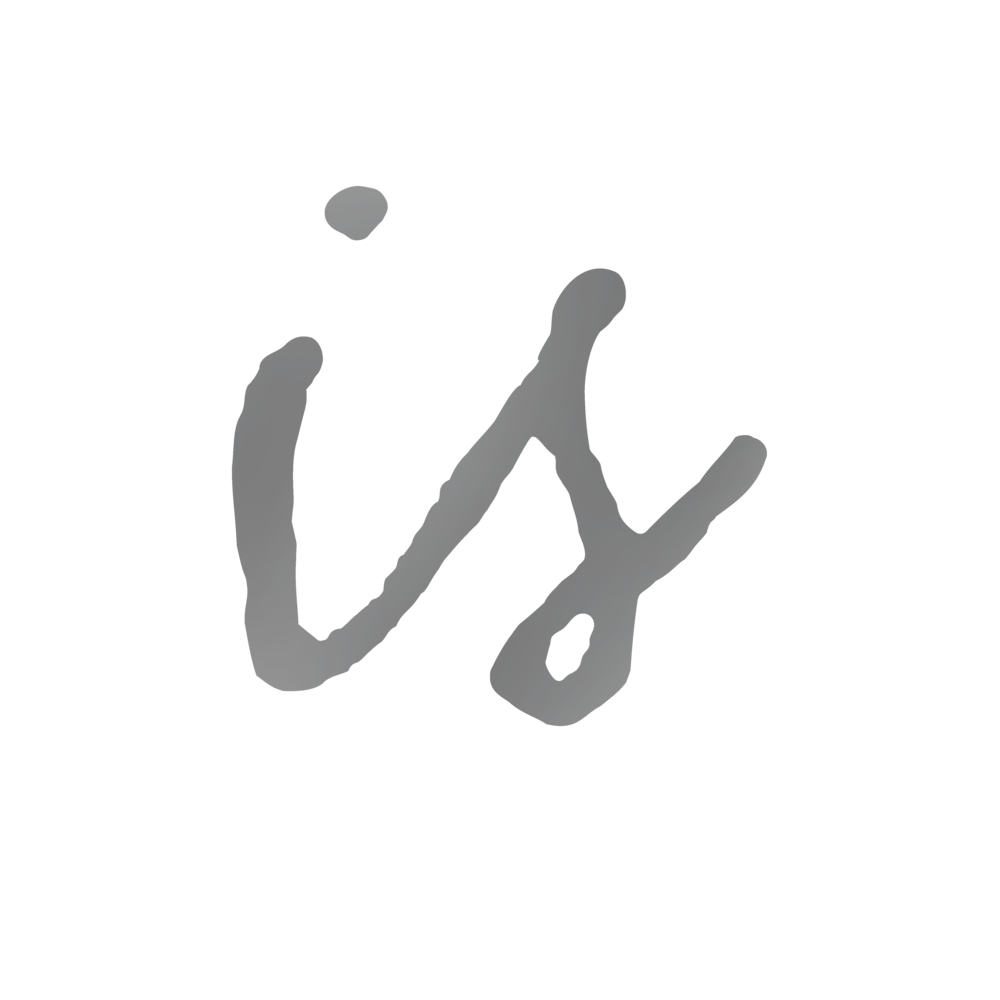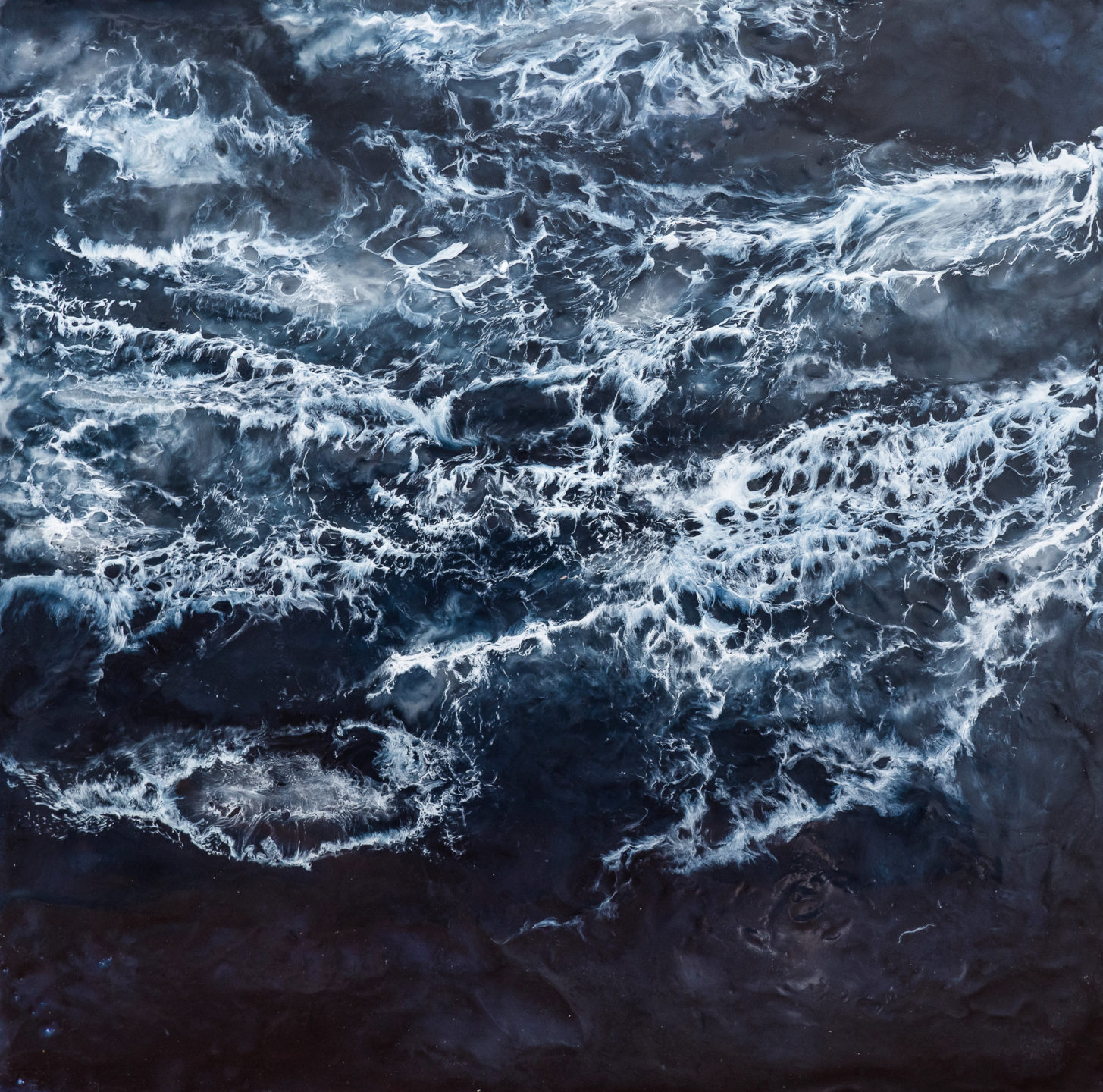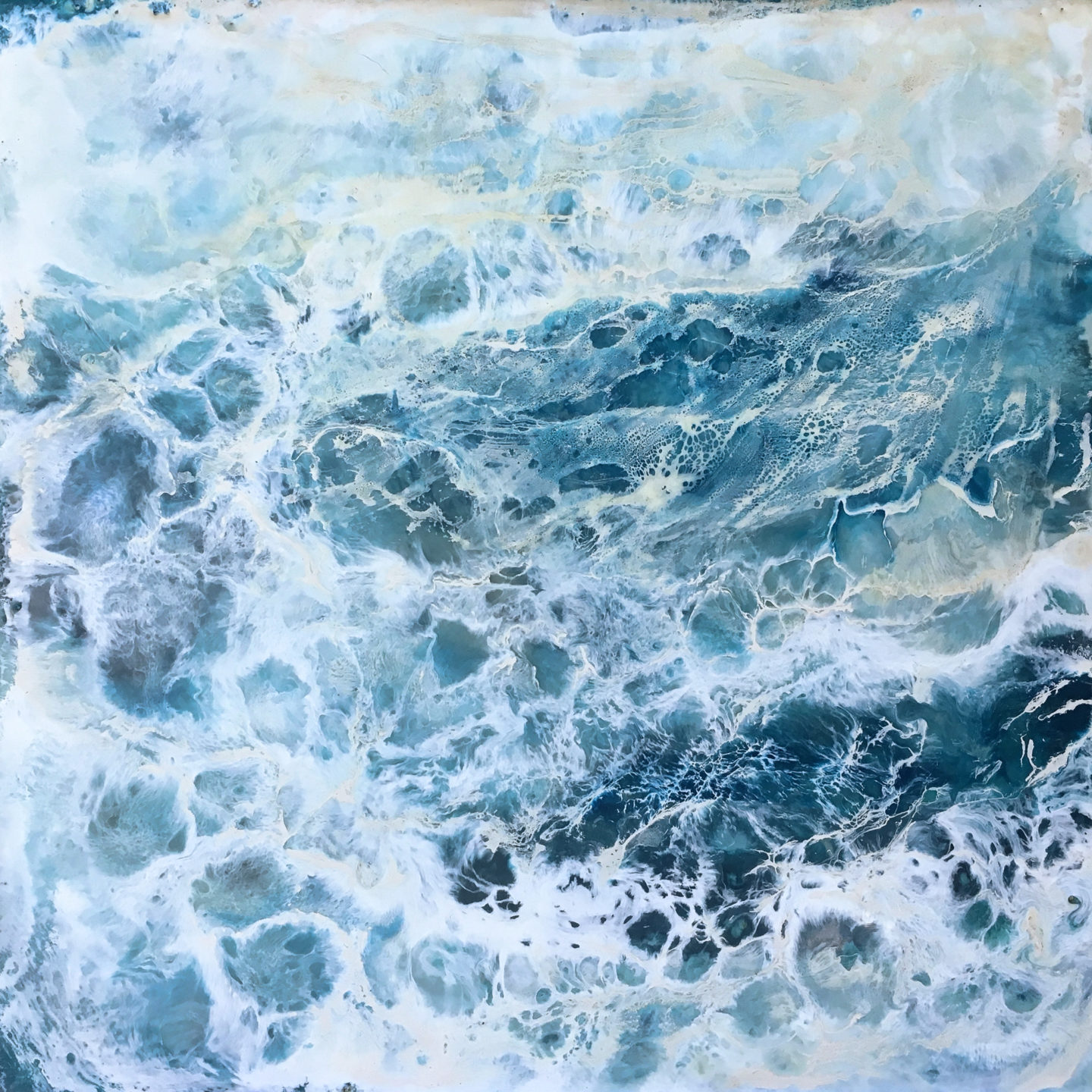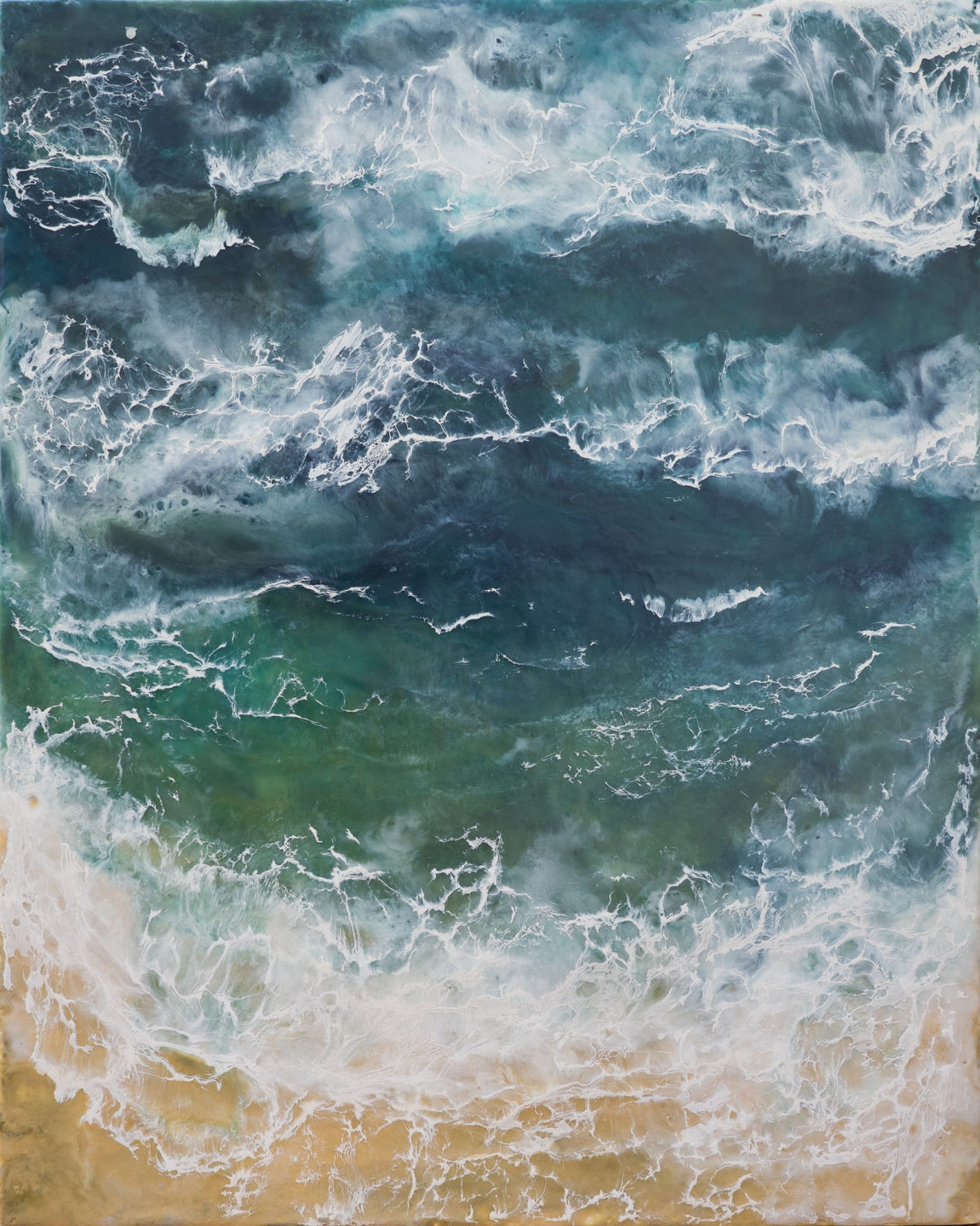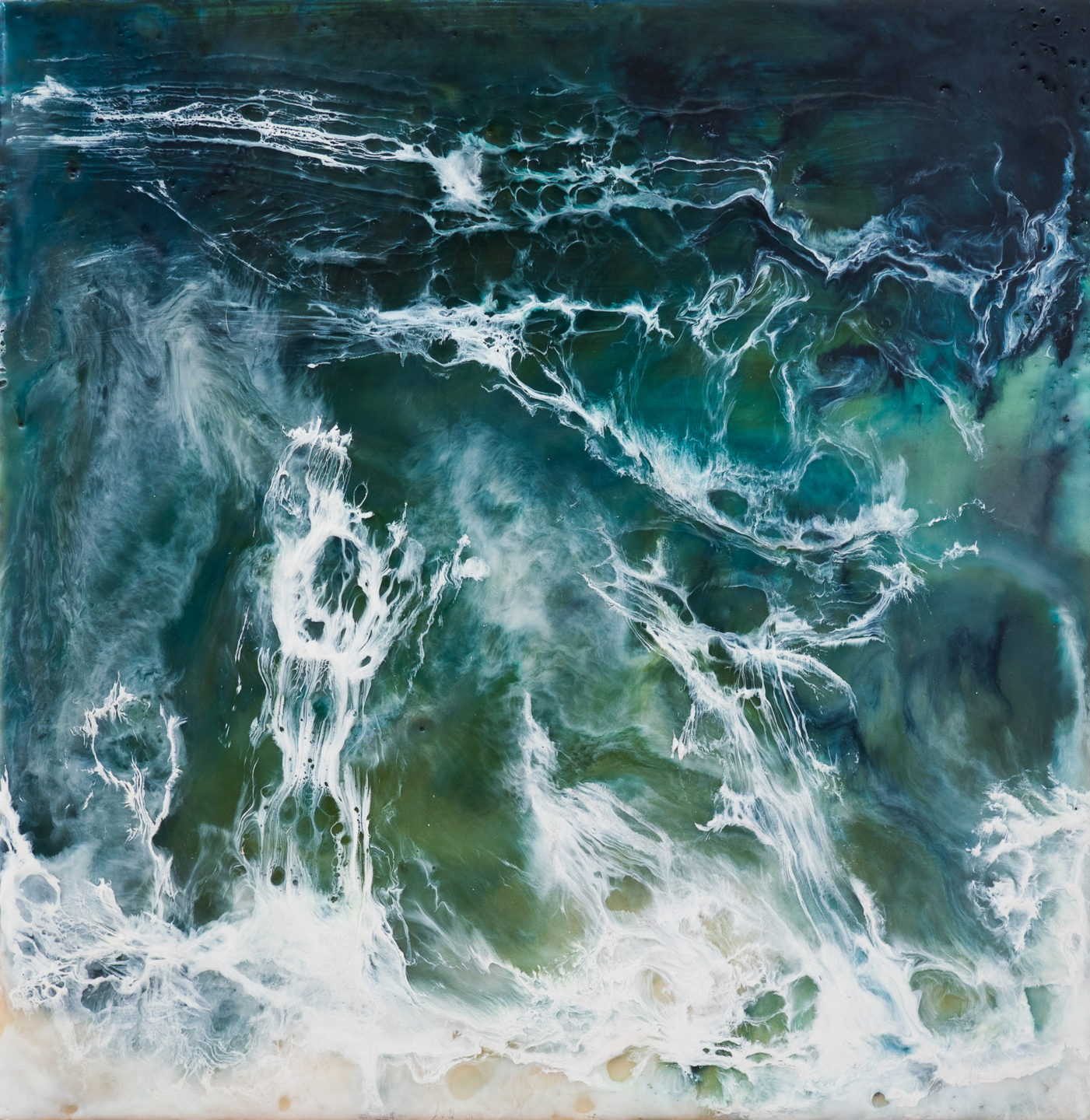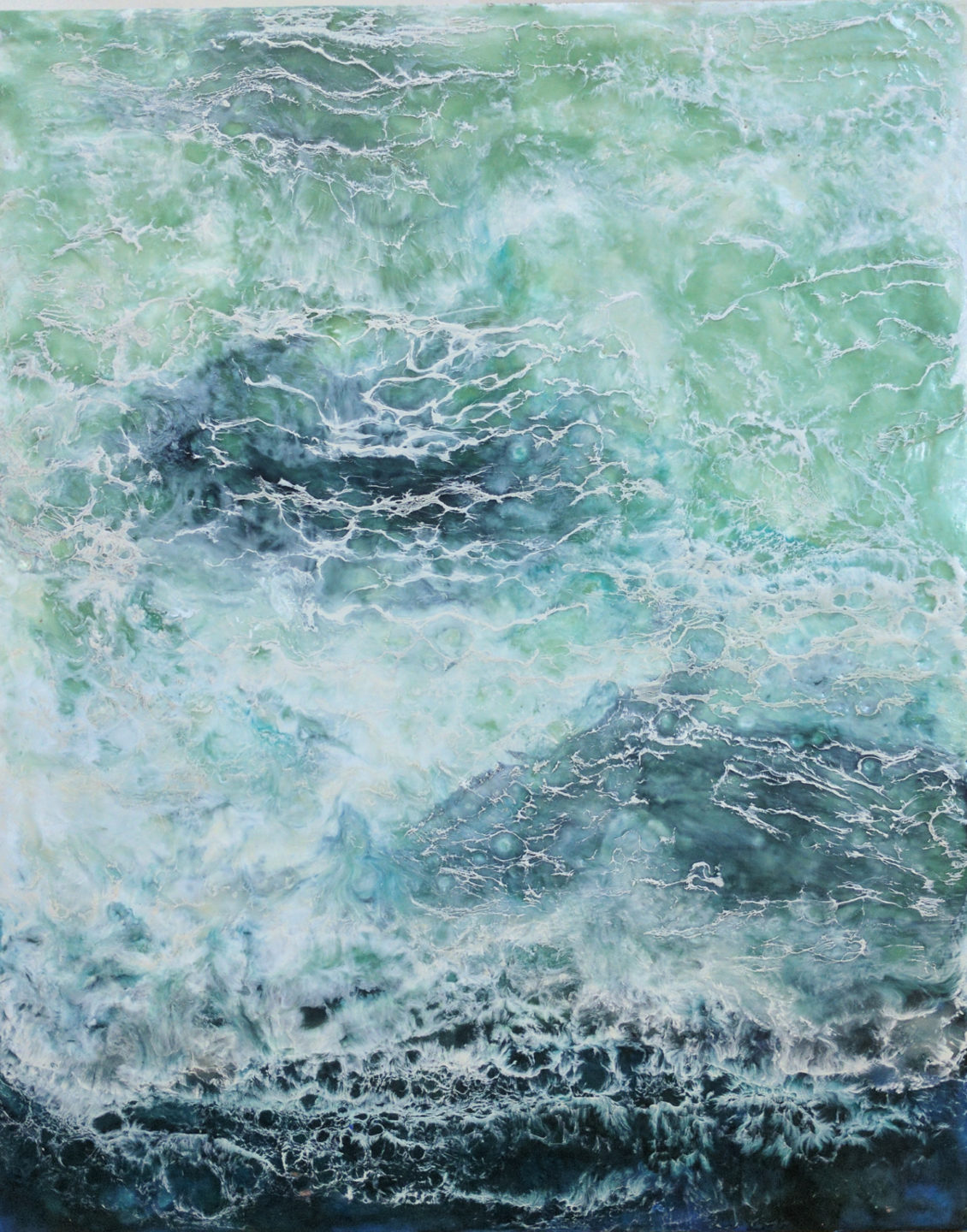Beyond the Sea
Given that she grew up in a family of artists, the fact Julie Brookman eventually became a painter herself is not, perhaps, surprising. Growing up, her family was probably highly unusual in that they actually encouraged her to study art, to take classes and to explore whatever art forms or practices fascinated her. As Julie herself jokingly puts it, “They never told me that making art was not a good way to make a living, or that maybe I should take a marketing class or focus on something more practical!” That early freedom to explore, coupled with the practical experience gained from grappling first hand with a wide range of artistic disciplines, is evident in her most recent body of work, entitled Saudade — a hypnotic meditation on the life and rhythms of the sea.
With a degree in photography and an extensive background in glass blowing, jewelry and metal fabrication, painting wasn’t Brookman’s obvious first choice, especially given that her grandmother was a successful Bay Area abstract painter in her own right, with museum shows and a loyal following. “Although it was never something anyone ever told me, I guess I always sort of felt like painting was her discipline, and that I should focus on something else.” But with an injury to her hand that made doing professional photography or glass blowing nearly impossible, she was back to square one — a skilled artist left without a medium.
In retrospect, however, this unfortunate turn of events proved to be not only fortuitous but transformative — providing Brookman with both the emotional impetus and the practical necessity to focus her diverse abilities on finding a new medium that would be able synthesized her skills with passion and purpose. A chance discovery introduced her to the process of encaustic painting: a technique that uses heat or an open flame to move pigments, bound in a mix of liquid beeswax and natural damar resin, across a wooden panel. She was immediately drawn to the technique. It required a photographer’s eye and sense of composition, a painter’s deliberate hand and expressiveness, and the skill of a jeweler or glass blower to use fire to shape materials in unexpected ways. This single process brought all her past skills to bear in a whole new way. Like Japanese calligraphy, working with encaustics requires quick, deliberate movements, since any hesitation is evidenced immediately in the medium and therefore in the result. “There is always a certain sense of freedom and randomness inherent in encaustic painting,” Brookman observes, but that wabi-sabi sensibility has to be balanced by the countervailing skill of an adept artist. “When I work, I have a vision and an intention. Some people watch me and think I am just pushing wax around with a blow torch, but the reality is I am applying pigments in a very deliberate way and using the wax like paint and the torch like a brush. Yes, there is a certain amount of chance to the technique, and I love becoming enveloped in the process. That’s my favorite part. I build up the work layer upon layer — playing with color, movement and transparency — balancing the urge to guide the outcome toward the image I have in mind with the natural reaction of the wax and pigments and the particular feeling I am trying to evoke.”
Those feelings are exactly what is implied in the name she chose for this present body of work: Saudade. Taken from the Portuguese, Saudade is not a word that is directly translatable in English. It is used to describe a subtle but potent feeling of melancholy and longing, reflection and memory, that comes when experiencing someone or something which is disappearing or has already been lost. Like the families of those Portuguese explorers who, long ago, watched their loved ones sail away onto the distant horizon, perhaps never to return, Saudade simultaneously distills a deep sense of reverence for the power and majesty of the sea with an idyllic but pensive reflection on the disappearing ecosystems and watery landscapes in a world who’s oceans have become altered, perhaps irrevocably, by the effects of development, pollution and a changing climate.
“I mostly work from memory,’ Brookman observes. “I have been a lot of places and have seen a lot of things. But of all the places I have traveled, my time living in Borneo had the greatest influence on me. A lot of those places won’t be there anymore in the way that I experienced them. Those little islands barely sticking out of the water: they will be underwater or they have been developed or they’re gone.” The art of making these paintings, however, seems to go beyond the act of merely providing a record that such places existed. Brookman continues, “I’ve taken photographs of some of the places in my work, but they never seem to capture the feeling of actually being in that place. Working the way I do now, I can evoke the actual feeling of being there, and I can create perspectives that more closely capture the totality of that experience for me.” But for Brookman, who, as a dive instructor, has studied oceanography, geology, and is also married to a surfer and lives near the sea, her creative process goes beyond the mere romanticism to draw on a more analytical study of waves. “When you surf, you need to look at the interaction of the waves, see how they are forming, see if it is something you can actually go surfing on. You have to look at “why” the waves are doing what they are doing. Is it safe? When I am sitting on the beach waiting for my husband to come in, I’m always looking at the water. The irony is that, I don’t really even like the waves. As a diver, the best conditions are calm and clear— no white water. Sometimes I think my process for painting these pieces is actually just a way to work through my fears.”
Original paintings from the Saudade series, as well as commissioned pieces of your favorite seascape by Julie Brookman, are available thorough the IAN SAUDE STUDIO GALLERY. Please contact us for more information.
